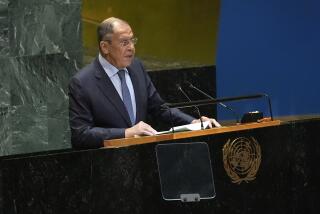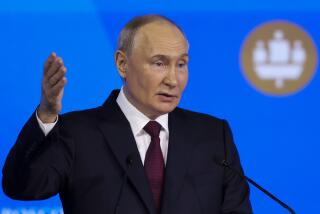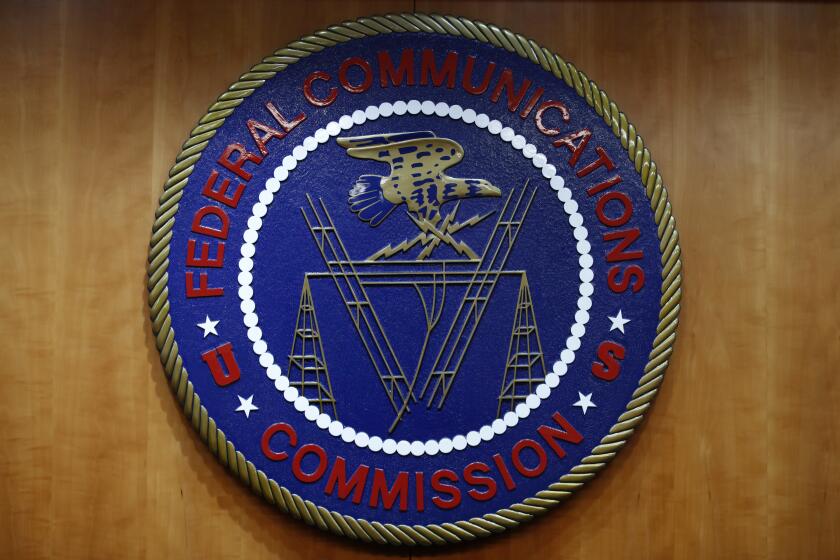Don’t Put All A-Arms in Russia, Kazakh Says : Soviet Union: The republic leader says the central government should have control of all nuclear weapons.
ALMA-ATA, Soviet Union — The powerful president of Kazakhstan, the Soviet Union’s second biggest republic, said Monday that he is strongly opposed to moving all of the country’s nuclear weapons into the Russian Federation, a move Soviet military authorities have suggested to bring the arsenal under tighter control.
“I am absolutely against having any single republic control all nuclear weapons by itself, irrespective of how large that republic might be,” Kazakh President Nursultan A. Nazarbayev said at a news conference after a meeting with Secretary of State James A. Baker III.
His warning clearly reflected a desire to avoid giving too much power to the Russian Federation, the largest of the Soviet Union’s 12 remaining republics and the strongest political force in the new, more loosely connected Soviet Union.
“Nuclear missiles, especially the intercontinental ballistic missiles, are now located on the territory of three of the Soviet republics: Russia, the Ukraine and Kazakhstan,” Nazarbayev said.
“I say that in the Soviet Union, defense should be unitary and all nuclear weapons should be under the control of the central government, with the coordination and monitoring of those republics on whose territories these nuclear weapons are stationed.”
Nazarbayev did not specify what he meant by “coordination and monitoring,” but U.S. officials said they do not believe that he is demanding a direct role in deciding when or whether nuclear weapons should be used.
His position appears similar to that of President Boris N. Yeltsin of the Russian Federation, who said last week that the central government should control all Soviet nuclear weapons but should consult the republics on issues of nuclear policy.
A Soviet Foreign Ministry spokesman, asked about Nazarbayev’s position, said it will not influence Soviet foreign policy or disarmament policy. The Soviet Union, he said, remains committed to its international obligations, including the recently signed Strategic Arms Reduction Treaty.
“No matter how this issue is discussed and resolved,” the spokesman said, “I think there should be no cause for concern.”
U.S. officials said that Baker visited Nazarbayev in his remote Asian capital, 2,400 miles southeast of Moscow, because the Kazakh leader has played a key role in mediating among the Soviet republics--but also to learn about his views on control of Soviet nuclear weapons.
Nazarbayev had earlier declared that he wanted to turn Kazakhstan into a “non-nuclear republic,” but U.S. officials said they weren’t certain what that meant.
One of the Soviet Union’s largest nuclear testing grounds is at Semipalatinsk in northeastern Kazakhstan, but Nazarbayev said he has halted the tests, a move Kazakh nationalist groups had long demanded.
“I told Mr. Baker that, by my recent decree, all nuclear testing at the test sites on the territory of Kazakhstan will be immediately terminated and the sites and test ranges will all become science research and development facilities under the Academy of Sciences of Kazakhstan,” Nazarbayev said.
Baker, who sounded at times as if he were endorsing Nazarbayev in an election campaign, praised the Kazakh for his “forward-looking positions.”
“In our view, Kazakhstan is, of course, one of the very most important republics in the Soviet Union. And President Nazarbayev is one of the most important leaders in the Soviet Union,” he said.
Nuclear Weapons in the Soviet Union
The Soviet Union’s nuclear arms and bases are concentrated in three republics: Russia, the Ukraine and Kazakhstan. As the union falls apart, control of those weapons is a major concern. On Monday, Kazakhstan’s president said he opposes a proposal to move all the weapons into the Russian Federation.
Source: Soviet Military Power 1990
More to Read
Sign up for Essential California
The most important California stories and recommendations in your inbox every morning.
You may occasionally receive promotional content from the Los Angeles Times.










